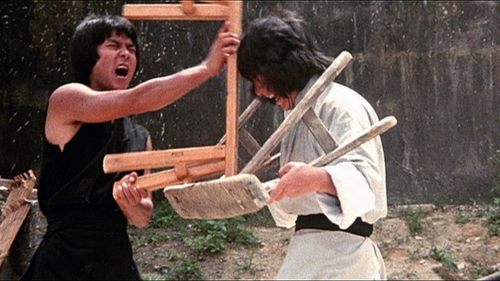Sunday Reads: FilmStruck - The King Is Dead! Long Live The King!
FilmStruck is dead and Film Twitter is in mourning. If you lived in social circles that loved the classics, you understood how valuable having access to the foundations of cinema are and FilmStruck was too good to be true: $7 for all the great movies Warner/AT&T has in their catalog or $11 (or less with a yearly purchase) depending if you wanted access to the Criterion catalog as well. So, what went wrong if this was something all cineastes loved and appreciated?
To have a sustainable subscription model, you need to be able to do two things: constantly add new subscribers and retain the ones you already have. FilmStruck more than likely did great with retention, but by relying on catalog, and by not adding fresh new content on a regular basis, they very likely failed at growing their subscribers. The Criterion catalog is not new to streaming. Netflix had it, paid a lot of money for it, and they left when Hulu made them an even bigger offer. While Criterion was at Hulu, I asked a Hulu exec if they knew how many subscribers were just on Hulu for the Criterion collection. “Oh yes,” he said. “How many?” I asked. “500k?” “No!” he laughed. “Far less, a lot less than 100k even.” Now this was several years ago and it's possible they were able to grow the audience, but it's important to have some understanding that the audience for something as niche as Criterion is much smaller than what a brand-new streaming company needs to stay viable.
I am sure Warner was aware that a service like this would be an uphill climb, but they counted the vast catalog they have would be the key to a successful streaming service along with the Criterion prize. After all, the broadcast sales on the Warner library was one of the crown jewels of the Warner library and had been a major revenue driver for them over the years. However, they have now come to recognize you can make far more dollars licensing library content out than by building a platform where library content is the focus. As I’ll discuss later, customers need more than just the classics.
With the small audience they had, they probably didn’t churn through subscribers. The ones they had were very loyal. What would be interesting to know is how engaged they were. Besides revenue, streaming platforms help studios “own” the living room and Netflix has done a great job here because they can both encourage binge watching and keep you engaged for hours on end. Their recommendation engine creates less work for the consumer to engage in content. Most platforms, like FilmStruck, require their audience to search out content they are looking for while Netflix does the job for you. Because of this, I’d be willing to assume engagement with FilmStruck was a lot lower than engagement with Netflix. While Warner/AT&T are happy to take dollars from the tens of thousands of folks who subscribed to FilmStruck, they probably weren’t happy with how engaged they were.
Now that we’ve talked about why FilmStruck likely failed, let’s talk about what happens next. If we take some learnings that we’ve previously discussed in past editorials – that the all-you-can-eat model is the cheapest way to consume content and by pushing consumers into the cheap broadcast window, we have devalued content even when more content is being consumed than ever. There’s a reason why Criterion DVDs and Blu Rays are so much more expensive than your average studio film: The audience for these films is much smaller so higher pricing is needed to sustain that model, especially if you are paying $50k or more to restore these films. We all know the packaged good market has declined and Blu Rays are seen now as a “collector’s market”. Warner and Criterion must figure out a way to generate the revenue they had in the past through packaged goods and linear broadcast sales with the subscription model. A service with just a niche catalog can’t have high prices – we’ve opened the Pandora’s box with the buffet model at the ten-dollar price point and we can’t close that box. FilmStruck at $25 would have died an even quicker death. We’re only going to have four, five, maybe six of these services to replace the old cable model, so there’s a danger of pricing yourself out here.
So, what is the solution? Let’s look at some other providers of niche content for the studios: Fox Searchlight, Focus, and Sony Pictures Classics. They can sustain their niche content by leveraging their blockbusters, especially with international broadcast deals. These deals guarantee dollars for content that has a small base because the platforms want the high demand content.
Warner/AT&T will do the same thing here. They will build a super streaming platform in 2019 with original content from HBO and Warner driving subscriber growth and engagement. This platform will layer in Warner’s huge catalog that was FilmStruck and perhaps even the Criterion catalog will be back as Criterion doesn’t have many options having spurned both Netflix and Hulu in the past while not generating a worthwhile subscription base for either. It will probably cost more than that ten-dollar price point, but Warner/AT&T will likely play around with shorter theatrical windows to justify the cost. Their DC platform will likely stay separate as they are trying to tie in comic book sales and that declining market.
In short, don’t panic yet. The (FilmStruck) King is dead, but the new King is coming and it’s bigger than ever because it needs to leverage its high demand studio content with its niche catalog that Film Twitter knows and loves.



